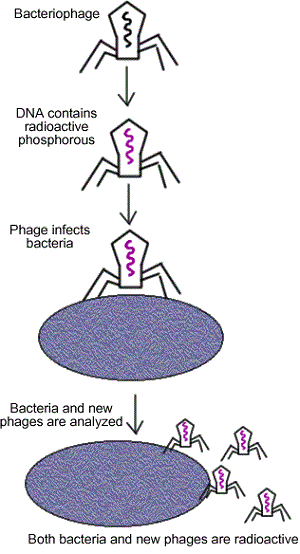Ch 14: Historical Basis (DNA)
How was DNA discovered to be the chemical unit of heredity?
Scientists already knew that chromosomes played a role in heredity, but the chemical composition of the chromosome included DNA and proteins. At the time, they did not know which molecule actually contained the hereditary information.
Big Question: Was DNA the molecule of heredity or was protein?
Frederick Griffith's Experiment - Transformation
Using two varieties of streptococcus, he originally searched for a vaccine. One variety of bacteria had a capsule (like a cell wall) the other did not have a capsule.
1. Injection with live encapsulated bacteria -- mice contracted pneumonia and died
2. Injection with live naked bacteria -- mice lived, immune system destroyed the bacteria
3. Injection with heat killed encapsulated bacteria -- mice remained healthy
4. Injection with dead encapsulated bacteria and live naked bacteria -- mice contracted pneumonia and died
*note that neither of this forms caused disease before, but when placed together something occurred to make the living naked bacteria virulent.

 What conclusions can be drawn from the experiment?
What conclusions can be drawn from the experiment?
Living bacteria acquired genetic information from dead bacteria - particularly the instructions for making capsules, thus transforming the naked bacteria into incapsulated bacteria.
The Transforming agent was discovered to be DNA. DNA was isolated and added to live naked bacteria, and they were transformed into the incapsulated kind.
The Hershey-Chase Experiment - Bacteriophage
1. Hershey and Chase forced one population of phages to synthesize DNA using radioactive phosphorous.
2. The radioactive phosphorous "labeled" the DNA.
3. They forced another group of phages to synthesize protein using radioactive sulfur.
4. The radioactive sulfur "labeled" the protein.
**DNA contains phosphorous but not sulfur.
**Proteins contain sulfur but not phosphorous
5. Bacteria infected by phages containing radioactive protein did not show any radioactivity.
6. Bacteria infected by phages containing radioactive DNA became radioactive.
7. This showed that it was the DNA, not the protein that was the molecule of heredity.


